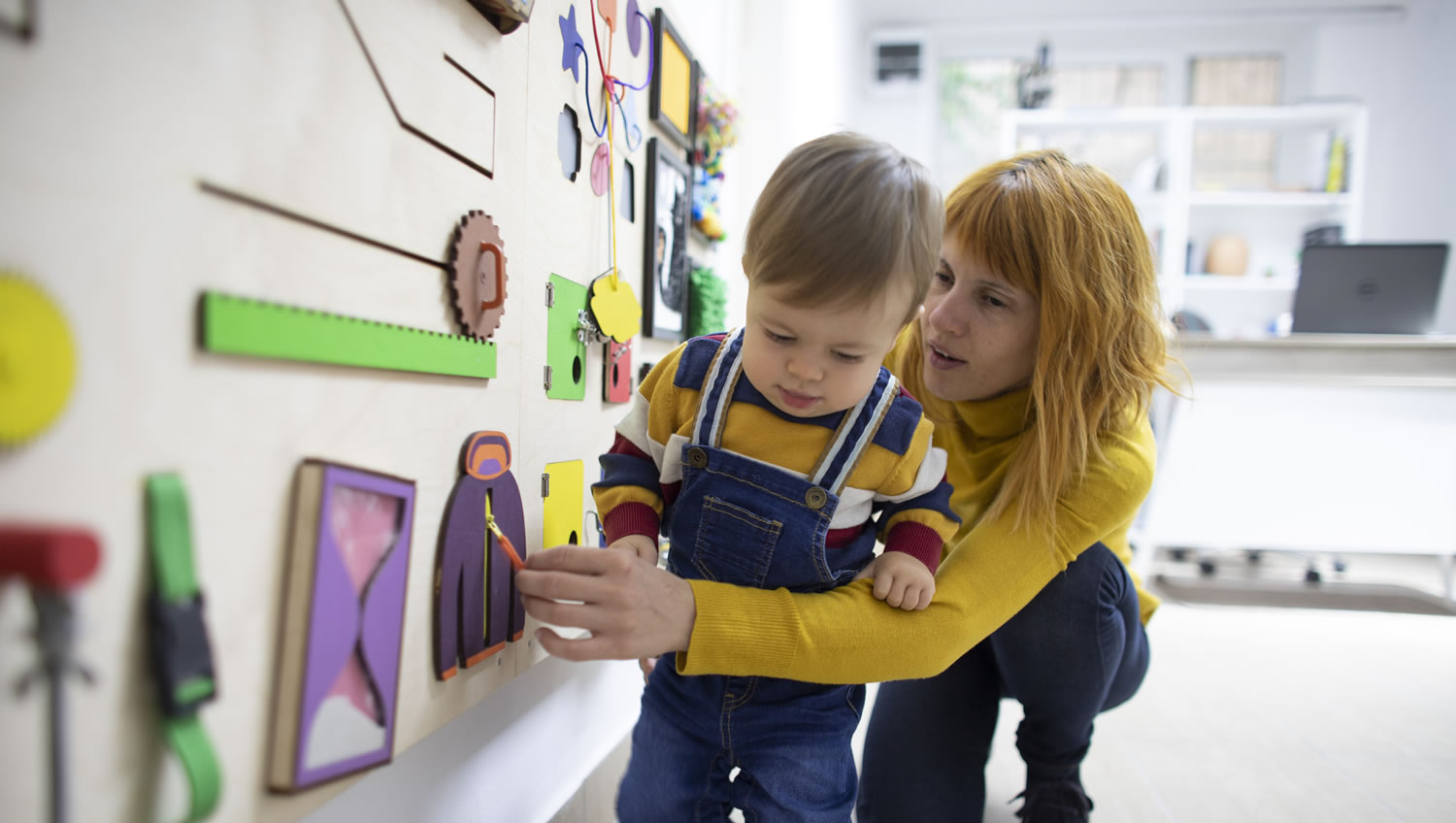Teaching children with autism in mainstream early learning
Published on Tuesday, 14 September 2021
Last updated on Wednesday, 08 December 2021

Intensive early intervention has been proven to be effective in supporting the development of children with autism spectrum disorder, improving language, adaptive and social behaviours, as well as cognitive abilities.
But as this kind of therapy is often engaged in through specialist centres it can become very expensive for families.
“A minimum of 15-25 hours per week of early intervention is recommended to support communication and independence skills in young autistic children,” say La Trobe University Research Fellows Kristelle Hudry and Cathy Bent in an article for The Conversation.
“This is usually achieved through specialist centre- or home-based services. But this level of intensity is expensive, and unaffordable for many families.”
Hudry and Bent’s study in Melbourne found that a more affordable option for the families of young children with autism, which can also provide the high level of early intervention needed by children on the spectrum for their best developmental outcome, may be supporting mainstream early learning centres to enable them to teach children with autism alongside neurotypical children.
In their study, Hudry and Bent followed 44 young children with autism spectrum disorder (ASD) as they were placed into different educational environments, tracking their progress for one year.
Half of the children were placed in specialised care with trained therapists and only autistic children, the other half were in mainstream early learning environments with educators who were given specialised training and classes of predominantly non-autistic children.
In the mainstream ECEC environments, all the children involved in the study were taught using the Group-Early Start Denver Model (G-ESDM). Typically, the ESDM is used in one-on-one therapy sessions as early intervention for children aged 12-48 months with ASD.
The therapy sessions use a play-based, relationship-building approach to help improve the children’s social-emotional, language and cognitive abilities. In application, therapists and parents use everyday activities to help the children connect, communicate and learn, while at the same time reducing the symptoms of ASD.
A randomised controlled trial of the therapy on toddlers diagnosed with ASD showed significant improvement in development and behaviour compared to other methods.
The group approach takes the same techniques but applies them in a mainstream early learning setting, allowing children with a range of developmental abilities to learn, play and socialise together.
It was developed by La Trobe University’s Autism Specific Early Learning and Care Centre, and has been proven to provide “positive gains across cognitive, adaptive, and communicative outcomes” (ASELCC Inclusion Program).
The program claims that “High-quality child care environments that promote engagement in joint activities with peers have been found to positively impact on social and communication development (National Institute of Child Health and Human Development Early Child Care Research Network, 2000, 2003).
The Inclusion Program aims to provide autistic children with rich social and learning opportunities in a high quality and social group early learning and care environment, combined with personalised early intervention.”
“Each child’s personalised learning goals are targeted within natural routines and activities across the childcare day,” say Hudry and Bent.
“For example, at snack time staff may help a child develop interest in what peers are doing, practice communication skills such as requesting food, and practice independence skills such as using a spoon and waiting their turn.”
While at the ASELCC facility’s Inclusion Program the therapy is delivered by trained therapy assistants, in this study educators in mainstream early learning were given specialised training to apply the G-ESDM therapy techniques to their everyday teaching practices.
In this way, other services could facilitate the inclusion of children with ASD into mainstream early learning settings, providing them with the support they need to reach developmental goals while also allowing them to socialise in a more natural environment.
For early learning services interested in becoming qualified to support the needs of children with autism spectrum disorder, training is available in ESDM through a number of channels. The University of Wellington runs workshops for parents, therapists and educators in ESDM techniques, and a book about implementing G-ESDM in early learning environments is also available through online channels.
There are also resources available online to help teachers support the individual needs of children with ASD.
The National Association for the Education of Young Children (NAEYC) in the US has a page on their website with helpful suggestions about using imagery to help children on the spectrum who have trouble with processing verbal language.
The Education Hub also lists a number of strategies that can easily be applied in mainstream settings every day, including having areas where you can minimise noise and distractions for children with ASD, and increasing opportunities for face-to-face interaction such as educators holding books and toys near their faces to help autistic children look towards them.
“This is a first step toward showing that quality early-intervention can occur within mainstream settings – without compromising child outcomes or the learning environment for peers,” say Hudry and Bent of their G_ESDM study.
“The ultimate goal is for autistic children to access quality support in their local communities including within mainstream settings, if that’s the best choice.”
Related Articles

New research - Integrating autistic children in mainstream care
Supporting autistic children to successfully assimilate into mainstream school alongside their non-autistic peers.

Autism changes to diagnostic criteria in the DSM-5
Autism changes to diagnostic criteria in the DSM-5.

Early learning programs for children with autism
How the AEIOU Foundation’s first purpose-built autism hub for under sixes will support toddlers, preschoolers on the autism spectrum and their parents.
